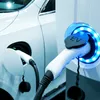4 practical ways to tackle India’s electric vehicle (EV) charging woes
While government policies like FAME I, II and the National Electric Mobility Mission 2020 outline measures to develop a stronger charging infrastructure, fast-track plans to scale the existing infrastructure are needed.
The Indian market has seen a rise in the penetration of hybrid, plug-in hybrid, and electric vehicles in the last few years. The aim of adopting EVs is to reduce the negative environmental implications of the automobile industry and move towards a more sustainable and fuel- and cost-efficient method of mobility.
Reliant charging infrastructure is the backbone of the electric mobility movement, but India still has a long way to go. Since the EV segment is in an embryonic stage, charging infrastructure in the country is not competent enough to turn India into an e-mobile nation.
While government policies like FAME I, II and the National Electric Mobility Mission 2020 outline measures to develop a stronger charging infrastructure, fast-track plans to scale the existing infrastructure are needed.
To address this issue, we first need an understanding of how EVs are charged.
Lead vs lithium
The life of the electric vehicle is the motor and the fuel for the motor is the battery. EV batteries are of two types—lead and lithium-ion. Lithium batteries come in LFP (Lithium-Iron-Phosphate) and NMC (Nickel-Manganese-Cobalt) chemistries.
While lead batteries require lower procurement costs, they are easier to maintain, and are well-suited for the Indian climate and terrain, lithium batteries are lighter, more efficient, and offer a higher set of operating voltage.
They also are more compact and have a lifecycle that is three times higher than lead batteries. However, lead batteries have a higher recycling rate and are more cost-effective as they can be manufactured in India, unlike lithium-ion batteries that have to be imported.
In India, fast chargers are currently only available in LFP chemistry with a capacity of 0.3C—meaning a 30AH battery can be charged at a maximum capacity of 10AH. The lead batteries available in the market are 28 amperes, but the chargers offered with them range from only three to five amperes as increasing this can damage the battery.
This translates to a charging period of 90 minutes for 10-12 kilometres of mobility. This waiting period is only suitable for charging stations where EVs can be parked for a longer duration.
Charging woes
The elaborate charging duration is one of the biggest concerns consumers have while making a shift to EVs. Typically, an EV battery requires a DC charge, but since the charging infrastructure in the country is underdeveloped, the number of charging stations is limited at this point.
This concern is directly linked with range anxiety and can potentially make inter- as well as intra-city commute difficult. An onboard charger is built into the car that converts AC to DC, allowing consumers to charge their vehicles in an emergency while the vehicle is stationary, but cannot be the long-term solution.
Immense fixed infrastructure and manpower is required at battery swapping stations, and a company making such considerable investments will ensure that the swapping stations are accessible for particularly their vehicles. But a single company can't sell to the vast Indian consumer base.
Practical solutions
To achieve a successful transition to e-mobility, these problems need to be addressed. Educating consumers about the need to adopt electric vehicles, their benefits, and their limitations are essential.
Informing consumers about the chemistries, capacities, and charging requirements of various kinds of batteries will help them make smart choices that will, in turn, help the nation move towards faster adoption of electric vehicles.
Lastly, aiming to adopt high-quality lithium battery chemistry is imperative. This can only be achieved by making their procurement easier and more economical for Indian EV manufacturers through adequate government policies.
Recycling EV batteries
We also need to keep the environmental effects of both lead and lithium in mind. While lead batteries are easier to recycle, the biggest environmental concern surrounds the lead component itself. It is a heavy metal with carcinogenic properties and can be toxic to the environment and human health if proper regulations are overlooked during the recycling process.
The recycling rate of lithium-ion batteries is far below that of lead. And while lithium is not heavy metal, the other components used in a lithium-ion battery like nickel, magnesium, and cobalt, do have toxic properties. However, lithium batteries are friendlier to the environment owing to their higher life cycle and energy density.
Edited by Kanishk Singh
(Disclaimer: The views and opinions expressed in this article are those of the author and do not necessarily reflect the views of YourStory.)







